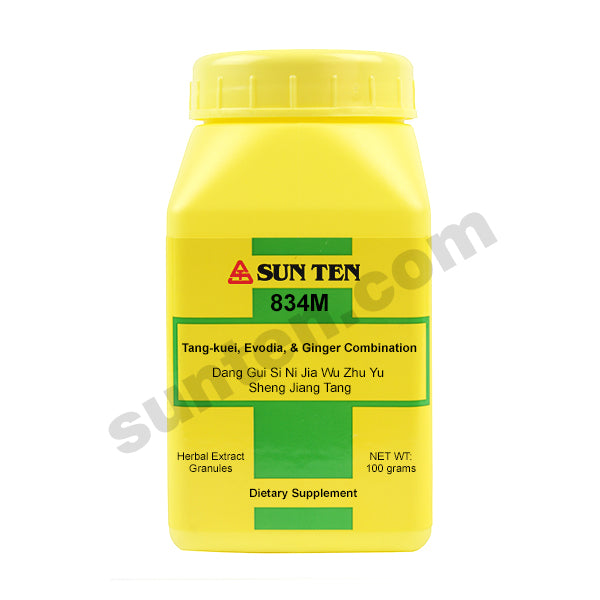Dang Gui Si Ni Jia Wu Zhu Yu Sheng Jiang Tang (Bian Fang)
Tang-kuei, Evodia & Ginger Combination Granules | 當歸四逆加吳茱萸生薑湯 (變方)
Practitioners: Please LOGIN to view the wholesale price. This item can only be purchased by a licensed practitioner. Find a practitioner
Ingredients: Tang-kuei root (dang gui), Cinnamon bark (gui pi), Tetrapanax (tong cao), Jujube fruit (da zao), Chinese licorice root (gan cao), White peony root (bai shao), Evodia (wu zhu yu), Ginger root, Cinnamon twig (gui zhi).
| Mandarin: 當歸四逆加吳茱萸生薑湯 Pin-Yin: Dang Gui Si Ni Jia Wu Zhu Yu Sheng Jiang Tang (Bian Fang) English: Tang-kuei, Evodia, & Ginger Combination Romaji: Toki Shigyaku Ka Goshuyu Shokyo To Kanji: 当帰四逆加呉茱萸生姜湯 Kampo: Yes |

